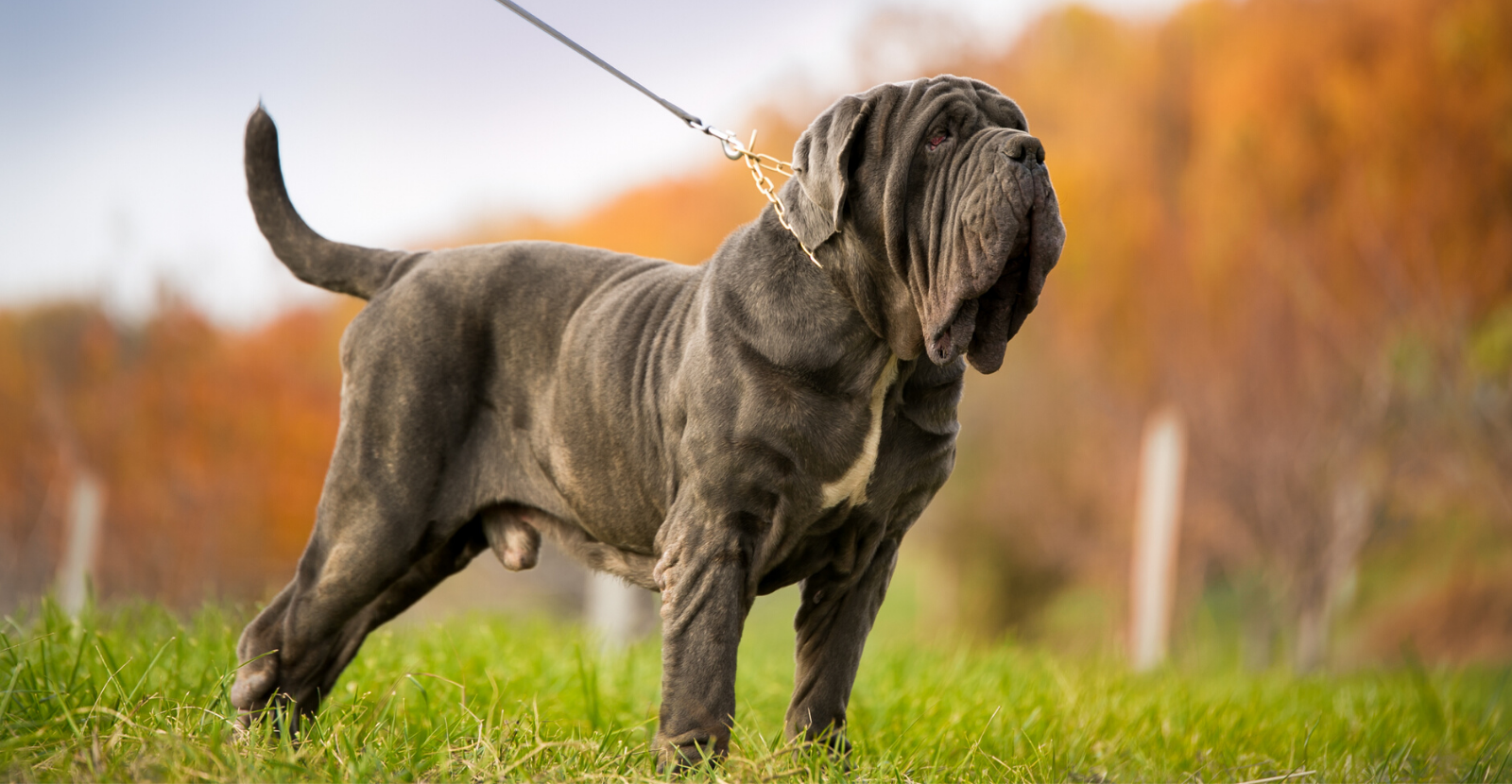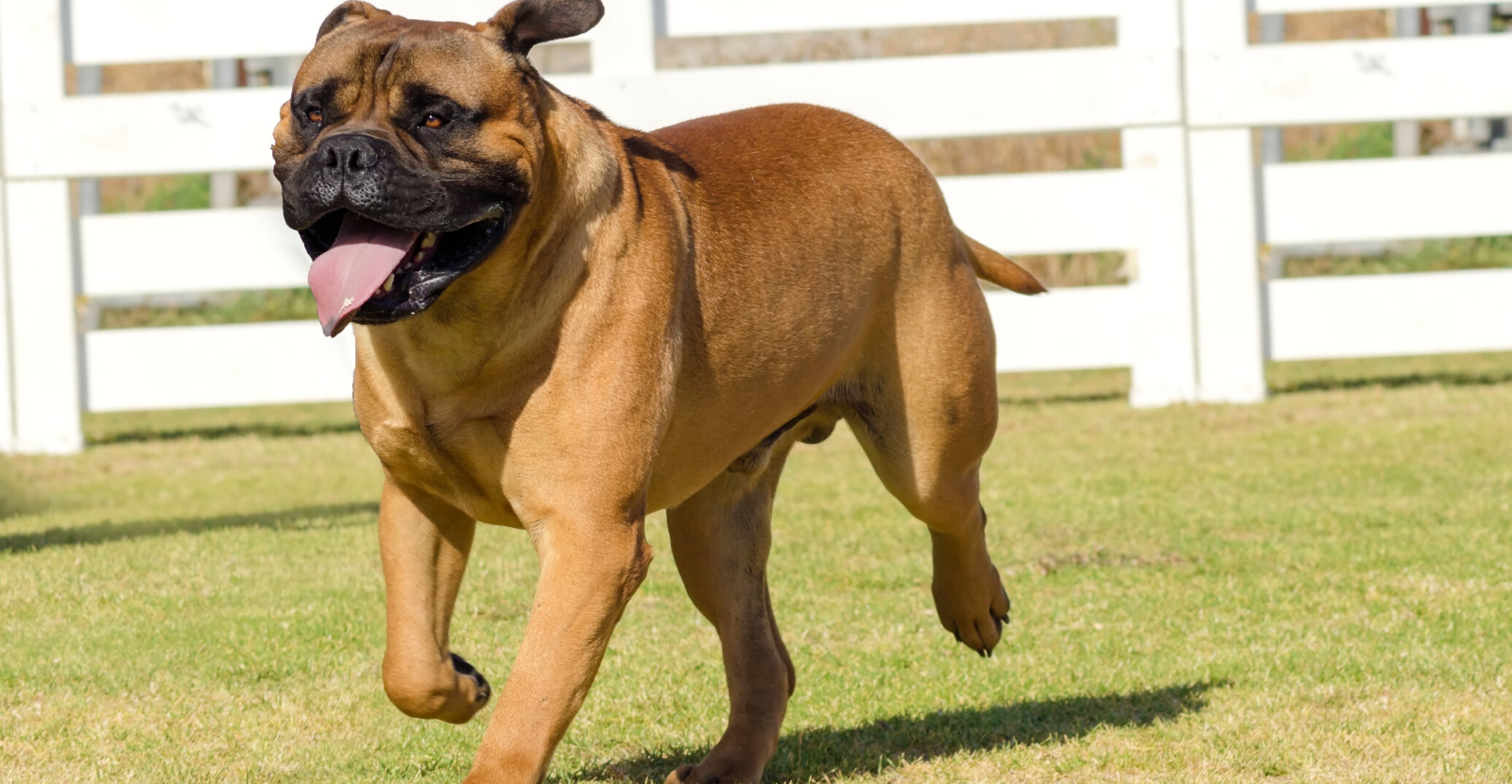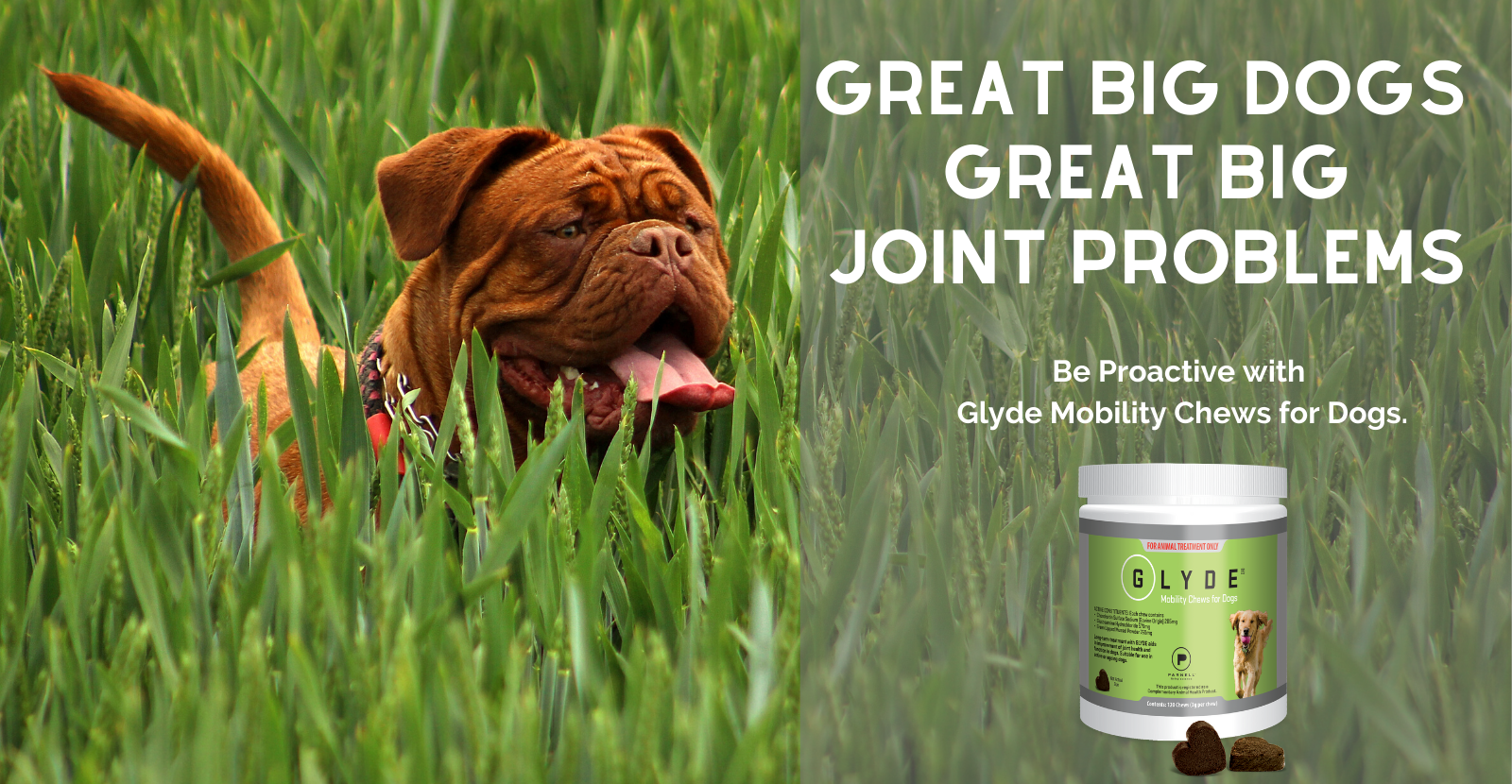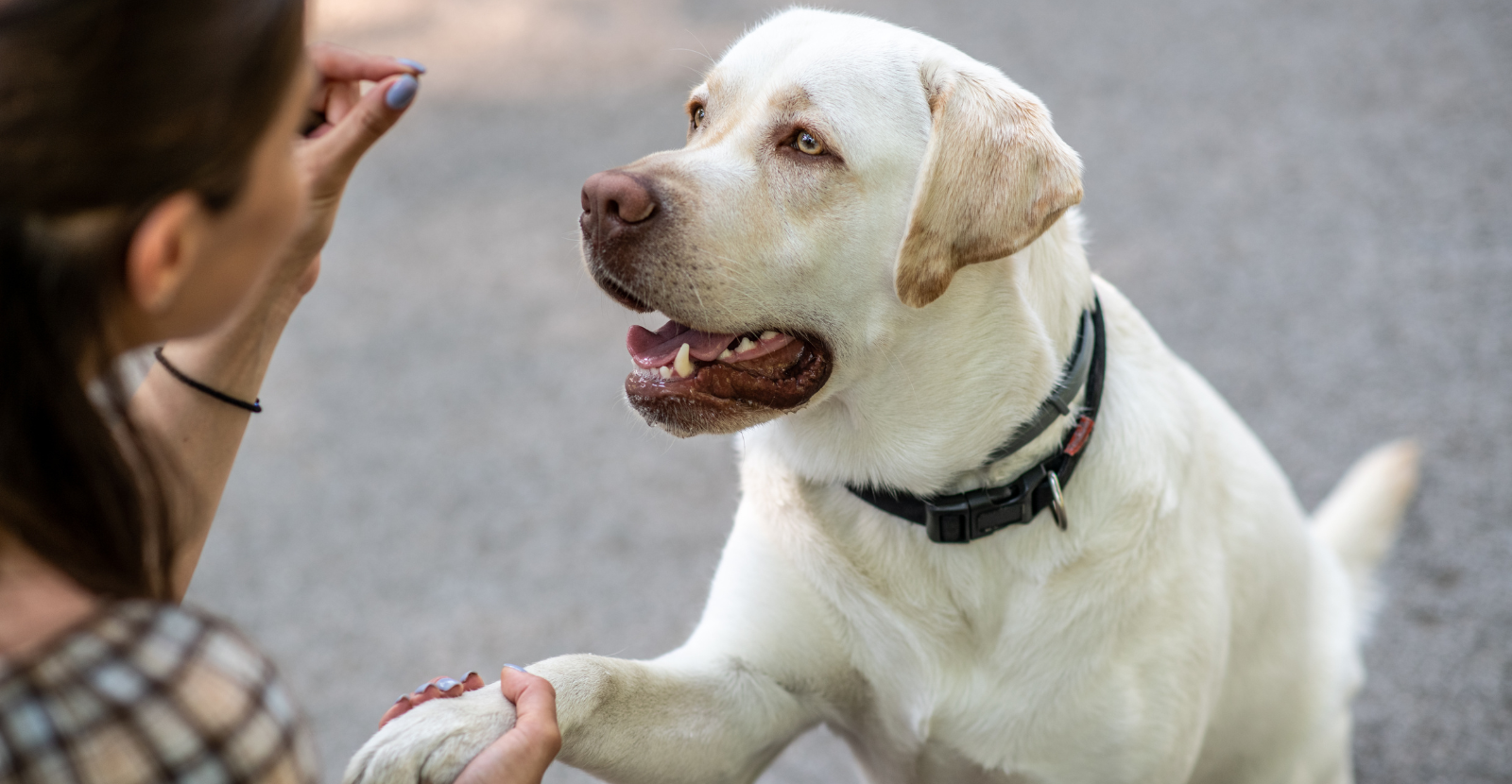Every month, we will highlight a popular dog breed at risk for arthritis. We will talk about what we love about them, as well as reflect on how to keep them healthy. This month, we are focusing on the Mastiffs, a key member of the World’s Largest Breed of Dogs. Learn more about this giant breed of dog and the several types of Mastiffs there, are as well as why we love them and how to keep them healthy.

Top 6 Reasons Mastiffs are Big in our Hearts!
- Big in many ways. These large dogs are exactly that in size, but also in their personality and their heart. They are amazingly loving creatures and love to cuddle.
- Dignified and grand. When you see a Mastiff, you will notice their large, massive frame of their body. How they stand leaves an impression of dignity and grandeur that most Mastiff pet parents know and appreciate.
- Good-natured dogs. Mastiffs are known for being extremely affectionate towards their family. Their calm demeanor means they get along well with other people and other animals.
- Great guard dogs. Mastiffs are excellent guard dogs. They protect their pack and are always loving towards their family. However, they are not fans of strangers and this may intimidate some people.
- Adaptable to any environment. Despite their size, Mastiffs can excel in big or small living. They are fine living with apartment dwellers or out in the suburbs with plenty of space. While they enjoy frolicking and being rambunctious, they really enjoy relaxing with you on the couch.
- Grooming is a cinch. Their short coat on a majority of the Mastiff dogs requires only brushing to keep their coat healthy and shiny. Wipe with a wet towel and you have fully groomed your Mastiff.
History
According to the AKC, there are a variety of Mastiffs which have been around for thousands of years. The Old English Mastiff and the British Mastiff are the traditional Mastiffs and recognized as the main form of the breed. These dogs have roots that can be traced back into medieval England. They were used as hunting dogs and some say even accompanied British forces against the French in the early 14th century. By the time World War II was over, England’s supply of Mastiffs was sorely depleted, with some estimating there were only 14 pure Mastiffs in England. Thankfully, this population of Mastiffs has been rebuilt with the help of U.S. breeders who were able to get good exports from Britain.
Breed Standards
- AKC Breed Popularity: Ranks 29 of 193
- Height: 76 cm. and up (male), 68 cm. and up (female)
- Weight: 72 -104 kg (male), 54 -77 kg (female)
- Life Expectancy: 6-10 years
- Group: Working Group
The World’s Largest Dogs
When thinking of the large dogs, the Mastiff often comes to mind. But there are many more giant breeds and several of them are the Mastiff category of dog breeds. In fact, the AKC acknowledged 12 of the largest breeds of dogs as the world’s largest dogs.
There are four different Mastiff mentioned in this list of giant breeds of dogs. They are:
Mastiff
Properly called the Old English Mastiff, this giant short-haired dog has a heavy, large head and a short muzzle. These dogs have been bred in England for over two thousand years and are mentioned throughout historic English literature. These beautiful large dogs have a black mask with varying colors of yellow bodies.
Neapolitan Mastiff
This breed is an excellent family and guard dog. Today this giant breed is sometimes thought of as a gentle giant with its massive size. Male Neapolitan Mastiffs can be anywhere from 26-31 inches at the shoulder and weigh 68 - 90 kg. Females are 60 - 73 cm tall and weigh 29 -90 kg.
American Mastiff
This breed is considered a cross from the Anatolian and English Mastiffs. The basis of crossing these breeds was to make it so the Mastiff with live longer without as many health problems. Because of this breeding, they have a longer life span than other Matiffs, with an average of 10 – 12 years.
Bullmastiff
These dogs were needed in 1860s England to keep large estates and game preserves free from poachers. The Bullmastiff is a cross between the Mastiff and the Bulldog to make a fearless dog that would attach on command. The American Kennel Club recognized as a Bullmastiff in 1933.
Tibetan Mastiff
There is much history associated with the Tibetan Mastiff as the guard dog of Tibet, but these dogs have roots in early 1100 BC China. Some have early accounts where the Tibetan Mastiff in 1100 BC in China and have accompanied the armies of Persians, Greeks, Romans and Attila the Hun and even Genghis Khan in western Europe.
Top Health Problems of Mastiffs
As you can imagine, Giant dogs sometimes have giant health problems. The Mastiff’s main health issues are in part due to their size.
The unfortunate fact that really no dog lives nearly long enough, the Mastiff’s lifespan is even shorter than an average sized dog. Mastiff’s are expected to only live 9-10 years. Their short life span can be attributed to their tremendous size. It is very important to be sure that you keep your Mastiff as healthy as possible with key preventative measures. But first, here are the key health problems to know about when it comes to your Mastiff:
- Canine Hip & Elbow Dysplasia. With most Giant breeds, there are a variety of joint issues. There will be joint problems arise, especially in the hip and elbow joints. This causes pain and impacts their mobility.
- Osteoarthritis, or arthritis. Because of the joint problems already mentioned, Mastiffs are at very high risk for osteoarthritis. Arthritis is as painful for dogs as it is for humans. And just like humans, there is something you can do about it. Learn more about arthritis in dogs and check out all the risk factors.
- Eye Disease. There are a variety of eye diseases Mastiffs are more susceptible to including “cherry eye” and canine cataracts.

Protection and Prevention Key to Mastiff’s Health
The health problems most encounter with a Mastiff can be protected against just by planning. Here are the top ways to keep your Mastiff healthy:
Healthy Diet:
This is said for all diets but is certainly true for large breeds. Mastiffs grow fast and are at large breed status quickly. However, their metabolism slows more than most breeds and even other giant breeds. Feeding your dog an appropriate diet is very important. Obesity is a serious health risk for giant breed dogs. More so than in average sized dogs.
Exercise:
Often, dogs need exercise. But for a giant dog like the Mastiff, it is imperative they get plenty of activity and exercise. Because of their large size, they are not good jogging or running partners. A Mastiff would be most happy with a fenced in yard to run as they want to. Adding to exercise is good dog training. If you have a Mastiff, being sure they are well trained is key so they know the proper commands and only instill fear if needed.
Preventative Care:
As most of the Mastiff’s health problems are joint-related, plan to do what you can to protect and strengthen their joints safely and naturally by adding a joint supplement to their diet. Most dogs need joint supplements by age 8. But since the Mastiff’s life expectancy is much shorter, they should begin taking joint supplements even earlier, by age 4 or earlier. Joint supplements can promote joint health and cartilage development which keep dogs active and youthful, longer.
Glyde® Mobility Chews
Parnell Living Science are the experts on osteoarthritis (OA) or arthritis in dogs and cats. We created a unique formula with key anti-inflammatory ingredients to combat the signs of aging. Glyde uses natural, gluten-free ingredients to promote healthy joints to let your dog do everything he or she loves to do! Glyde is the only nutraceutical that contains proven levels of three key components that work to relieve the painful signs of arthritis.
Glyde's proven formula has all-natural ingredients and high levels of glucosamine and chondroitin, plus Green Lipped Mussel (GLM). The proven levels of these key ingredients are what makes the formula unique:
- New Zealand Green Lipped Mussel (GLM):A powerful anti-inflammatory
- Glucosamine: Reduces cartilage degradation
- Chondroitin Sulfate: Helps rebuild cartilage
Why Choose a Mastiff?
If you are considering a Mastiff, remember there are many things that are great to consider. Mastiff size is something for sure. But remember what they will be doing most of the time. If you have a variety of friends coming to your home, a Mastiff may not be for you. However, if you want a loyal, strong protector for your home, a Mastiff is for you. These dogs also need a lot of interaction and exercise. Be sure to make them right at home and they will be your fierce protector and biggest snuggle buddy you can find. These lovable, gentle breeds for families become a key part of the family. There is a lot to love with the Mastiff!













